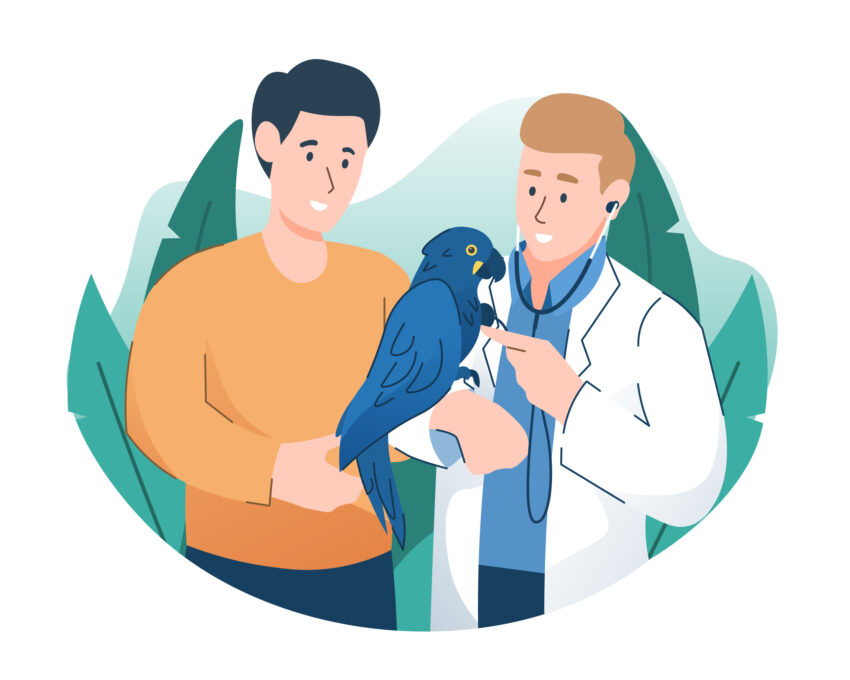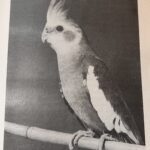
Diet recommendations for avian ganglioneuritis
I’ve written extensively about diet in this publication, but primarily for the prevention of chronic disease. While a good diet can help with illness prevention and recovery, sometimes a bird will get an infectious disease which requires some serious rethinking. I was motivated to write this by a reader with an Amazon parrot with Avian Bornaviral Ganglioneuritis.
When I first started keeping birds, this illness was called “macaw wasting disease” and virtually nothing was known about it. We know it’s caused by a transmissable virus which has infected a significant portion of both captive and wild bird populations. But there are many mysterious that have yet to be solved. Thankfully, there’s a recent paper that summarises the current scientific thinking into this disease. While I’m not an infectious disease expert, I consider myself to be an expert at digesting scientific papers and attempting to demystify them. 🙂
Since this paper is quite long and dense, I will select some quotes from it and provide some commentary. It serves as a great resource for the disease in general, but I will focus on the dietary recommendations.
Daily care of birds with clinical symptoms of bornaviruses consists of providing an easily digestible, high energy diet, including banana, the mashed inside of potatoes or yams, rice, canned pumpkin, frozen peas, and scrambled eggs.
Avian Bornaviral Ganglioneuritis: Current Debates and Unanswered Questions—Veterinary Medicine International—2020
Some great specific advice on foods to try if you haven’t already. You might notice that the recommended foods are similar to what you’d give to a person with digestion and stomach problems. I’ve strongly recommended eggs in the past as a excellent supplement to a diet, particularly for sick birds, and it’s nice to see more research supporting this.
[…] the disease is now understood to have more extensive nervous system involvement.
Avian Bornaviral Ganglioneuritis: Current Debates and Unanswered Questions—Veterinary Medicine International—2020
And what does the nervous system need? Dietary fat. Lipids. Cholesterol.
Adequate dietary intake and nutritional status have important effects on brain functions and on brain health. Energy intake and specific nutrients excess or deficiency from diet differently affect cognitive processes, emotions, behaviour, neuroendocrine functions and synaptic plasticity with possible protective or detrimental effects on neuronal physiology. Lipids, in particular, play structural and functional roles in neurons. Here the importance of dietary fats and the need to understand the brain mechanisms activated by peripheral and central metabolic sensors. Thus, the manipulation of lifestyle factors such as dietary interventions may represent a successful therapeutic approach to maintain and preserve brain health along lifespan.
Impact of Dietary Fats on Brain Functions—Current Neuropharmacology—August 2018
This further suggests the advice to add eggs to the bird diet, since contain a healthy mix of good fats, including omega fatty acids (the ones your doctor won’t stop talking about). You can even buy “omega enhanced” eggs from chickens that are fed a high omega diet such as flaxseed.
So, now we get to the most important bit:
On the contrary, seeds, nuts, strawberries, and the skin of fruits such as apples should be avoided because they are more difficult to digest.
Avian Bornaviral Ganglioneuritis: Current Debates and Unanswered Questions—Veterinary Medicine International—2020
Note that this goes against my general recommendation for seed and nuts as a solid base for a quality whole-food diet. In this case, nuts and seeds can aggravate the gastrointestinal distress from this disease and should be avoided.
Others have suggested that it may be beneficial to supplement the diets of birds in early stages of the disease with vegetables high in fiber because it may stimulate intestinal motility, while the same foods are undesirable for birds with more progressive symptoms because they may remain in the intestines and ferment.
Avian Bornaviral Ganglioneuritis: Current Debates and Unanswered Questions—Veterinary Medicine International—2020
Well, this part appears to complicate things, but I’ll repeat the excerpt from the top of the article, which recommends these foods that happer to all be low in fiber:
Daily care of birds with clinical symptoms of bornaviruses consists of providing an easily digestible, high energy diet, including banana, the mashed inside of potatoes or yams, rice, canned pumpkin, frozen peas, and scrambled eggs.
Avian Bornaviral Ganglioneuritis: Current Debates and Unanswered Questions—Veterinary Medicine International—2020
Feel free to show this to your vet, especially if they are unaware of the most recent research. Vets are busy and research is something that can take them away from seeing their patients.
Hopefully this information will help birds suffering from this disease and their owners that are suffering with them.
